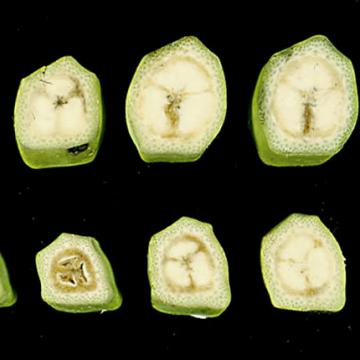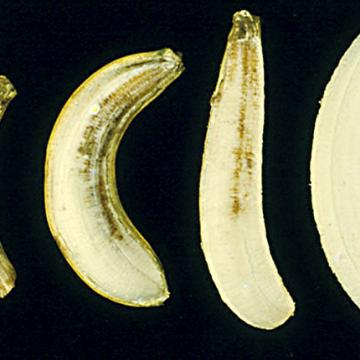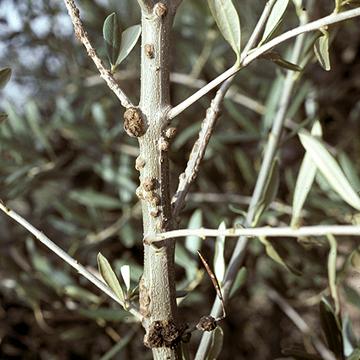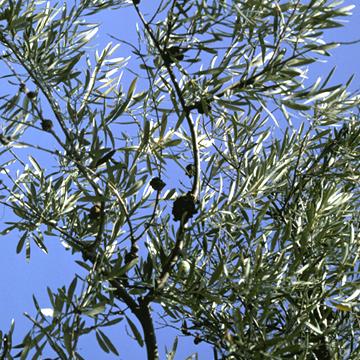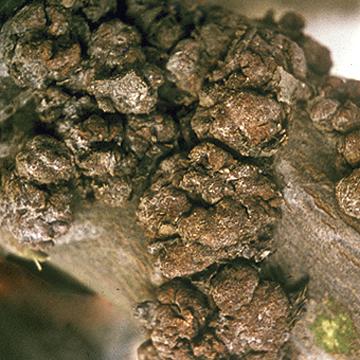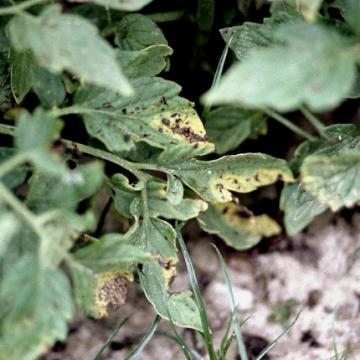DISEASE: Bacterial finger-tip rot
HOST: Banana
Cross sections of fruit with internal discoloration and rot. This disease is also known as Mokillo disease.
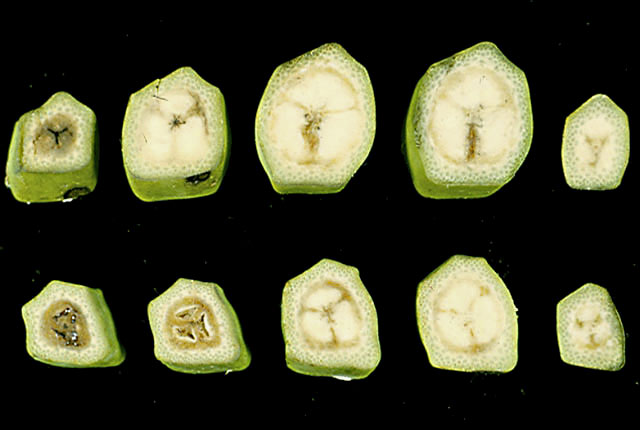
Bacterial finger-tip rot | Banana
DISEASE: Bacterial finger-tip rot
HOST: Banana (Musa sp.)
PATHOGEN: Burkholderia cenocepacia
PATHOGEN SYNONYM: Pseudomonas cenocepacia
SOURCE: I. Buddenhagen
DISEASE: Bacterial finger-tip rot
HOST: Banana
Longitudinal sections of fruit with internal discoloration and rot. Healthy (right).
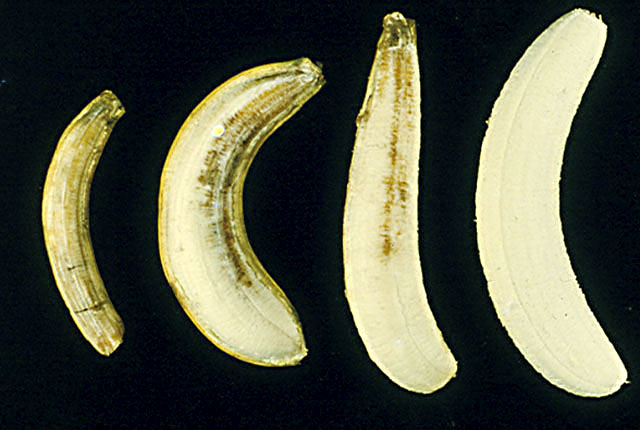
Bacterial finger-tip rot | Banana
DISEASE: Bacterial finger-tip rot
HOST: Banana (Musa sp.)
PATHOGEN: Burkholderia cenocepacia
PATHOGEN SYNONYM: Pseudomonas cenocepacia
SOURCE: I. Buddenhagen
DISEASE: Bacterial finger-tip rot
HOST: Banana
Diseased banana hand with external discoloration.
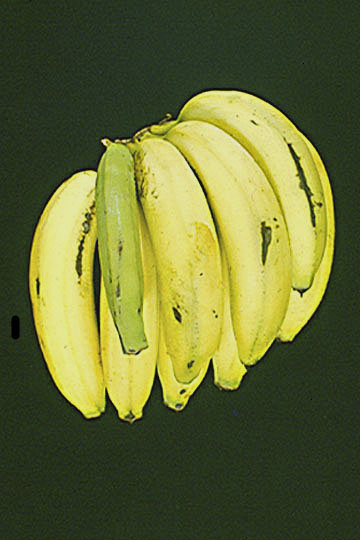
Bacterial finger-tip rot | Banana
DISEASE: Bacterial finger-tip rot
HOST: Banana (Musa sp.)
PATHOGEN: Burkholderia cenocepacia
PATHOGEN SYNONYM: Pseudomonas cenocepacia
SOURCE: I. Buddenhagen
DISEASE: Olive knot
HOST: Olive
Multiple infections of young stems. The bacterium invades vascular tissues during certain times of the year and may be isolated from branches that appear healthy.
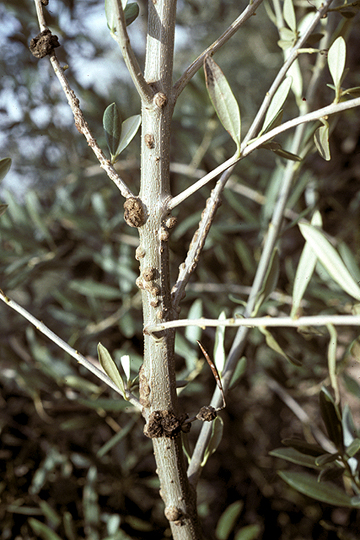
Olive knot | Olive
DISEASE: Olive knot
HOST: Olive (Olea europaea)
PATHOGEN: Pseudomonas savastanoi pv. savastanoi
SOURCE: M. Schroth
DISEASE: Olive knot
HOST: Olive
Tree with knots/galls on branches along with twig dieback, which is associated with knots. Fusarium and Diplodia spp. infect through knots and are thought to be main reason for dieback.
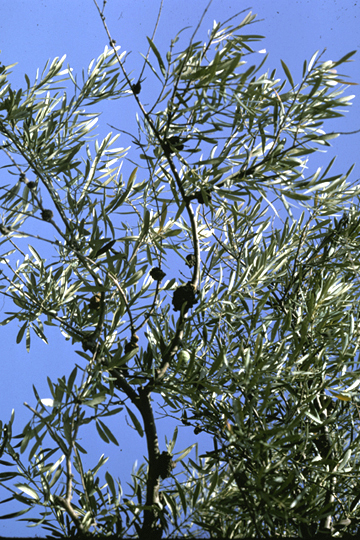
Olive knot | Olive
DISEASE: Olive knot
HOST: Olive (Olea europaea)
PATHOGEN: Pseudomonas savastanoi pv. savastanoi
SOURCE: M. Schroth
DISEASE: Olive knot
HOST: Olive
Multiple infections on olive branch. Knots at this stage begin to die from the outside in and are infected by several fungi.

Olive knot | Olive
DISEASE: Olive knot
HOST: Olive (Olea europaea)
PATHOGEN: Pseudomonas savastanoi pv. savastanoi
SOURCE: M. Schroth
DISEASE: Syringae leaf spot
HOST: Tomato
Leaves with brown necrotic lesions and chlorotic margins. Symptoms vary greatly among cultivars. Some have black or brown lesions with bright yellow, chlorotic areas and others do not have yellowing.

Syringae leaf spot | Tomato
DISEASE: Syringae leaf spot
HOST: Tomato (Lycopersicon esculentum)
PATHOGEN: Pseudomonas syringae pv. syringae
SOURCE: R. Gitaitis


